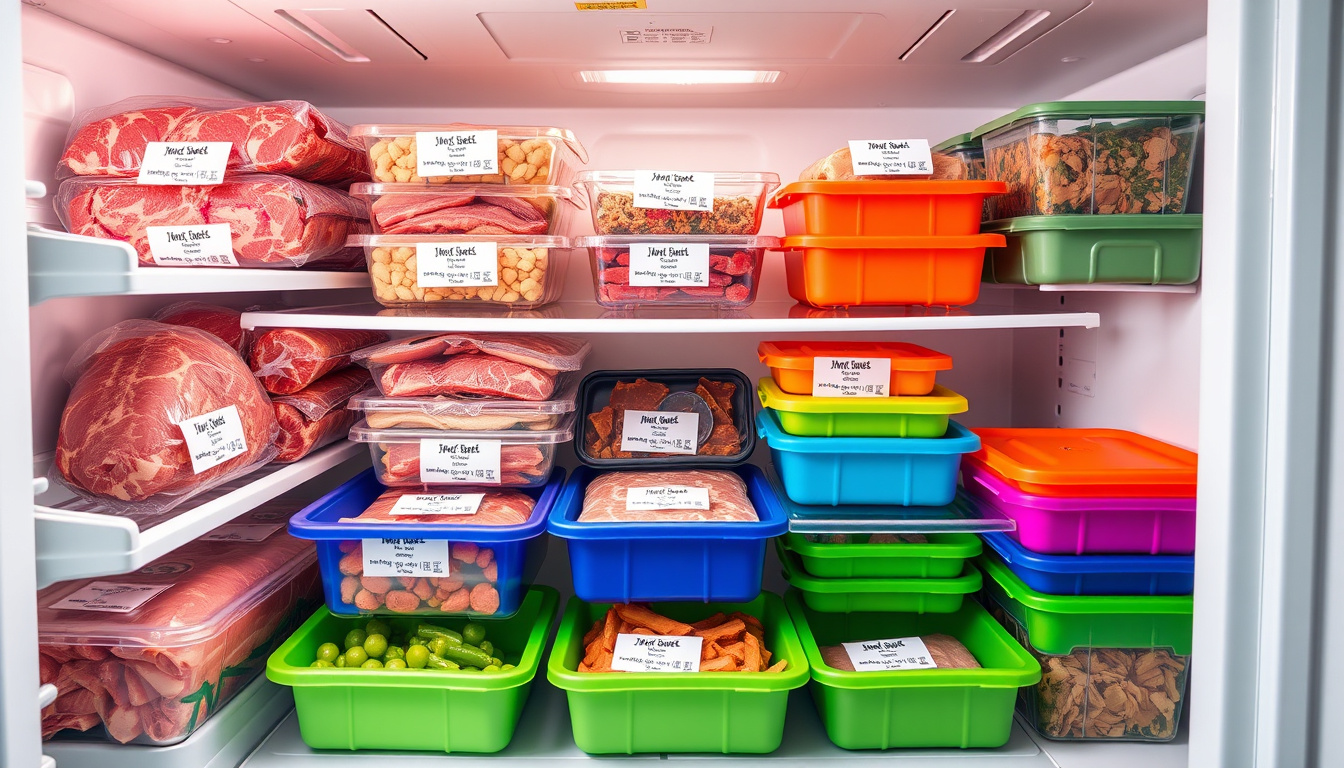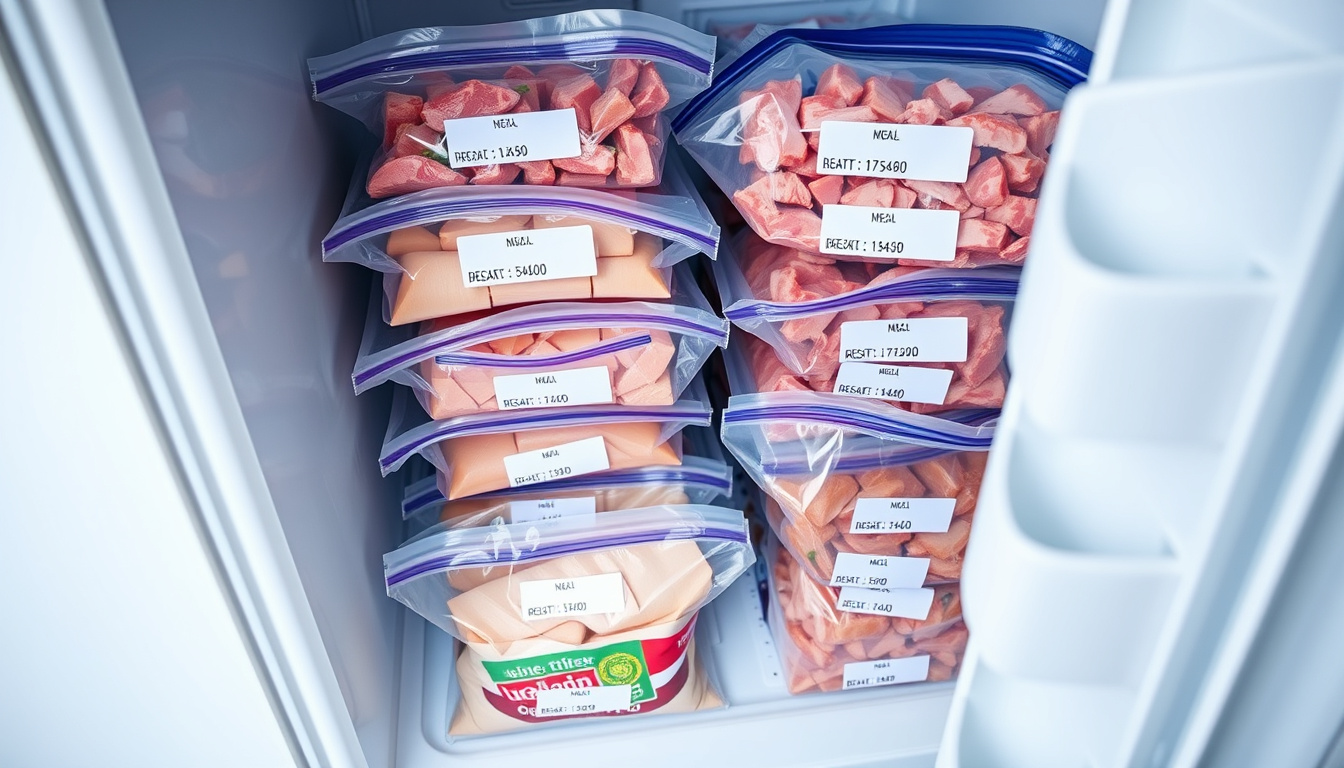Freezing meat in meal-sized portions is a fantastic strategy to save time, reduce waste, and ensure you always have a home-cooked meal at hand. Whether you’re a busy family, a single person, or someone who likes to plan ahead, mastering the art of freezing can transform your approach to cooking and eating. Here’s how to do it effectively.

Why Freeze Meat in Portions?
Freezing meat in meal-sized servings offers several benefits:
-
Convenience: Pre-portioned meals make it easy to grab what you need without defrosting entire packages. This is especially valuable on busy weeknights or when unexpected guests arrive.
-
Reduced Waste: By freezing in portions, you can utilize the meat before it spoils, reducing food waste and saving money.
-
Meal Variety: Having a variety of frozen portions allows for quick meal changes, helping you avoid cooking the same dish repeatedly.
-
Time-Saving: Batch cooking and freezing means you spend less time cooking during the week, as meals can be reheated in minutes.
Tools You’ll Need
To successfully freeze meat in meal-sized portions, consider the following tools:
- Freezer Bags or Vacuum Sealer: Freezer bags work well for marinated meats, while vacuum sealers prevent freezer burn and extend shelf life.
- Portion-Sized Containers: Use sturdy, freezer-safe containers (preferably glass or BPA-free plastic) to maintain the quality of your meals.
- Labels and Markers: Always label your portions with the contents and the date to keep track of freshness.
Best Practices for Freezing Meat
1. Preparation
Before freezing, prepare your meat to enhance flavor and convenience:
- Marinate: Marinating meat not only enhances flavor but also tends to tenderize it over time – an added bonus for frozen meals.
- Trim and Cut: Portion the meat into meal-sized pieces ready for cooking. For instance, chicken thighs can be portioned into packs of two or three.
2. Packaging
Proper packaging is crucial to prevent freezer burn:
- Remove Air: If using freezer bags, squeeze out as much air as possible before sealing. If vacuum sealing, follow the manufacturer’s guidelines for optimal sealing.
- Avoid Overpacking: Don’t overload containers; leave a little room for the meat to expand as it freezes.
3. Labeling
Label all packages with the following:
- Date: Write the date of freezing to monitor freshness.
- Contents: Identify the meat type and any accompanying marinade.
4. Freezing Techniques
- Flat Freezing: For freezer bags, lay them flat in the freezer. This method not only saves space but also allows for quicker freezing and thawing.
- Quick Freeze: For better texture retention, freeze meat quickly by placing it on a shallow tray or in even layers.
How Long Can You Freeze Meat?
The US Department of Agriculture provides guidelines on how long meats can be frozen while maintaining quality:
- Beef, Pork, and Lamb: 4-12 months (depending on the cut)
- Poultry: 1 year for whole birds, up to 9 months for cuts
- Fish: 6 months for fatty fish, up to a year for lean fish
While meats might remain safe indefinitely if kept frozen, quality can deteriorate over time.
Thawing Frozen Meat
To ensure safety and preserve texture:
- Refrigerator: This is the safest method. Transfer frozen meat to the fridge a day before you plan to cook.
- Cold Water: For quicker thawing, place the meat in a sealed plastic bag and submerge it in cold water, changing the water every 30 minutes.
- Microwave: As a last resort, you can use the microwave’s defrost setting, but cook immediately afterward to avoid partial cooking.
Meal Ideas for Frozen Portions
Here are a few meal ideas that freeze particularly well:
- Soups and Stews: These can be portioned with plenty of vegetables and flavor. Just undercook pasta if included to prevent mushiness when reheating.
- Casseroles: Classics like lasagna or shepherd’s pie make hearty meals that reheat well.
- Marinated Meats: Chicken, beef, or pork marinated and frozen allows for quick flavor-infused meals.
- Stir-Fry Ingredients: Prepare veggies with chunks of meat mixed in for a quick weeknight stir-fry.
Conclusion
Freezing meat in meal-sized portions is an excellent way to streamline meal prep, reduce waste, and enjoy home-cooked meals amidst a busy schedule. By following best practices for preparation, packaging, and labeling, you can build a freezer stocked with delicious, ready-to-cook meals that save time and satisfy cravings. Expand your cooking horizons, experiment with different recipes, and enjoy the convenience that comes with being organized.
>> Chest Freezer Reviews <<
>> Upright Freezer Reviews <<

